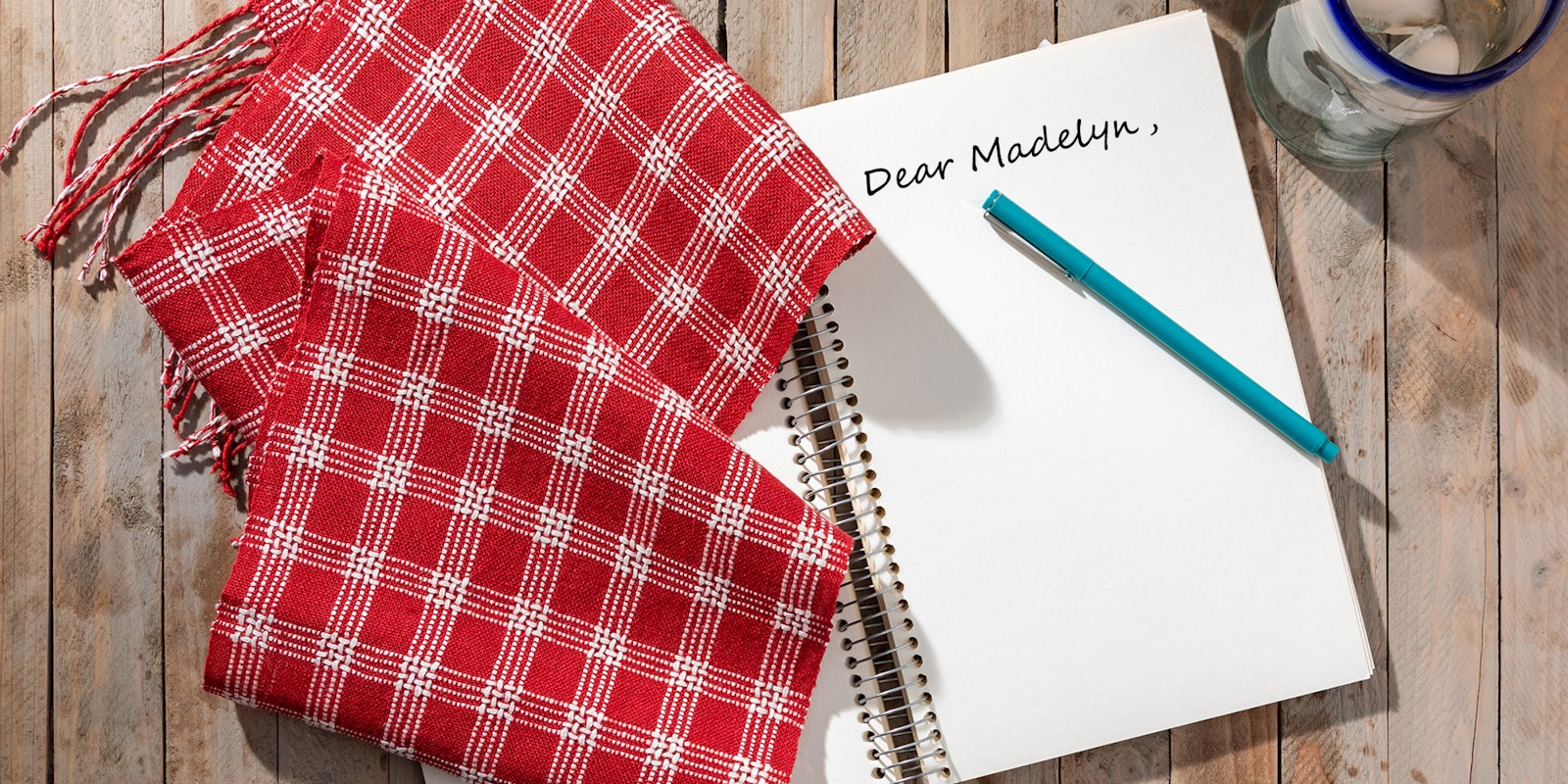Hi Madelyn,
I’d like to know how you use a sectional beam?
—Sara
Hi Sara!
Sectional warping usually means that you wind the warp on the beam in each individual section, one section at a time. If you are putting on a 5-yd warp at 20 ends per inch in 2” sections, for example, you have to wind 40 threads in each section that are all 5 yd long. If you are using 10 sections (for a weaving width of 20”), you therefore have to wind each of the 10 sections with 40 ends 5 yd long. Usually, the warp is wound on spools, the number of spools equal to the number of threads in each section. So for our hypothetical warp, you would need 40 spools and each spool would have to have a total of 50 yd (for 10 sections) on it. The threads from all 40 spools are sleyed in a small reed that sits in a tension box. The tension box applies a bit of tension to all 40 threads and is placed behind the first section on the back beam of the loom. The beam is then turned until 5 yd of the 40 threads are wound in the first section. Then the ends of the threads are cut and secured in the section and the box is moved to the next section and the process repeated.
When all the sections are filled, the cut ends from each section (usually kept in order with a piece of masking tape) are brought up and over the back beam for threading. An excellent article describing this process is in the November/December 2008 issue of Handwoven (Betsy Blumenthal, “Use Sectional Warping for Easy Warp Stripes,” pages 54-55.
There are other ways to wind the warp into the sections of a sectional beam. One is to use an AVL Warping Wheel (the warp is wound on the wheel first—in our example, 40 ends 50 yd long) and the wheel is moved from section to section, avoiding the use of spools and a spool rack. Another is to wind the warp in separate chains (in our example, 40 ends 5 yd long each) and wind each chain in a section. Still a third is to use the sectional beam as a regular beam, but passing the warp through a raddle that provides spaces between the groups of 40 threads so that as you wind the beam, the threads separate into the sections without hitting the pegs.
One advantage to using a sectional beam is that the layers of warp do not usually need paper or sticks to separate them. Another advantage to sectional beaming is that you can beam longer warps than a warping board or reel will usually allow.
—Madelyn

